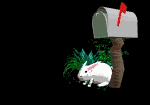

After the arrival of the German immigrants, the congregation was organized in two "Divisions," an English and German part, sharing with each other the church property, each having its own official board and at times its own pastor. This arrangement continued for nine years. however, as time passed and the membership grew, this arrangement became more and more unsatisfactory to both parties. In February 1858, arrangements agreeable to both were finally perfected which provided for a complete separation. The German part retained the old property, or that part of the property now lying north of Church Street while the English part erected a new church on the south side of the public square, which was dedicated on August 15,1859. After the separation, the Brethren Martin Houser and Herman Tietze continued as pastors of the English and German churches respectively. As independent and in due time self-supporting Moravian Churches for the next 57 years, they both prospered, growing in numbers and influence. In 1877 the German Chruch erected a new parsonage and dedicated a new church edifice on April 10,1892. The church edifice is still in use but a new and modern brick parsonage was erected in 1951.
As time passed, the German church gradually became English speaking, thus removing the only impediment in the way of a re-union of the two West Salem Moravian Churches. The glad day came on June 13, 1915. To signify the joining of the congregations, the bell from the English church was brought over and installed in the belfry of the German church. The bells were both rung as a symbol of the reunification of the churches. They both still reside there today and are rung together every Sunday.
As a reunited Church, the 75th anniversary of its organization was celebrated on Sunday, May 25, 1919, with impressive services throughout the day. In the afternoon of that day, the Houser Memorial Arch at the cemetery was dedicated.
As the years rolled on and ministry continued, the need for larger Christian Education facilities became increasingly apparent. Thus, ground was broken for an addition to the west which was dedicated February 12, 1967.
In May of 1991 on the church's 147th anniversary, the church dedicated a historical marker in the Moravian cemetery. This marker stands as recognition of the original settlers, a historical record for the community and a thank you to God for his blessings. The front of the stone has a Moravian Seal and a history of the church and cemetery. Dates of historical importance to the settlement and church are printed on the other side of the marker.
In 1994 the church celebrated its 159th anniversary. In preparation for the special event a year long celebration was planned. Some of the special events included: a traditional German meal, holding church services at the site of Peter Hinkle's farm, dedication of the newly reconstructed German Gate in the cemetery and a Tea and Open House to kick off the holiday season.
As the congregation continued to expand the need to enlarge the facility was realized. In 1996, a new kitchen, classroom, women's bathroom and a handicapped bathroom were added
The Moravian congregation, as it faces the 21st century, looks forward to the tasks of service and witnessing that lie ahead. The members are aware of the many chapters of history their fore-fathers have written in West Salem and they are ready to write their chapter of ministry to the area in the name of Jesus Christ.



FastCounter by LinkExchange